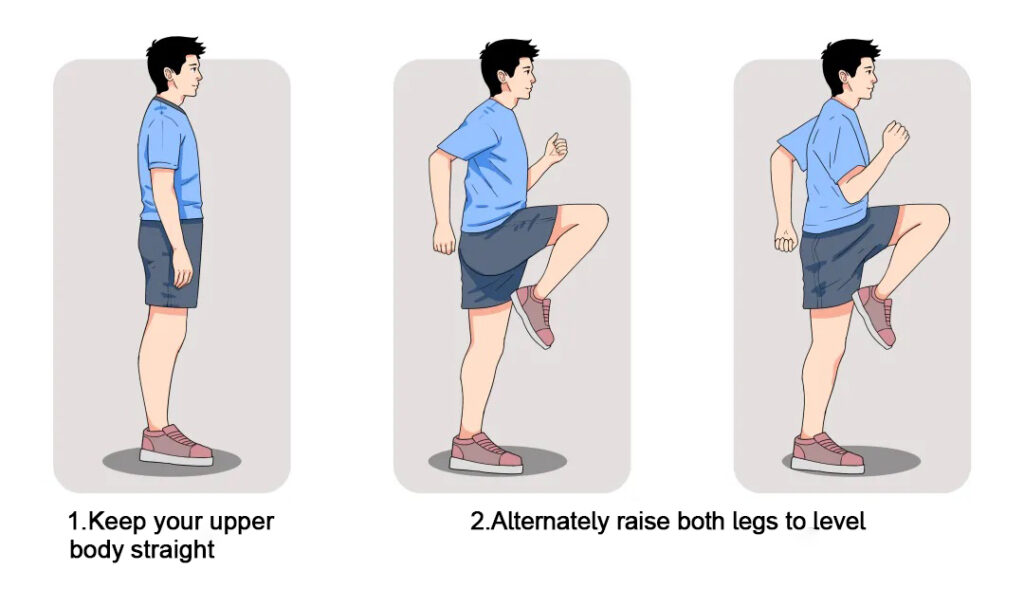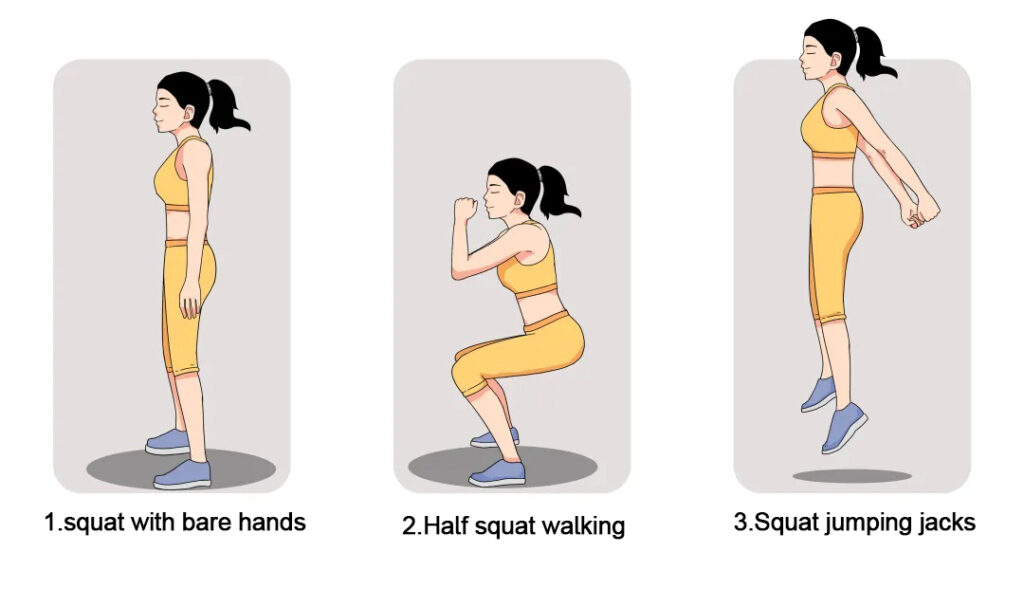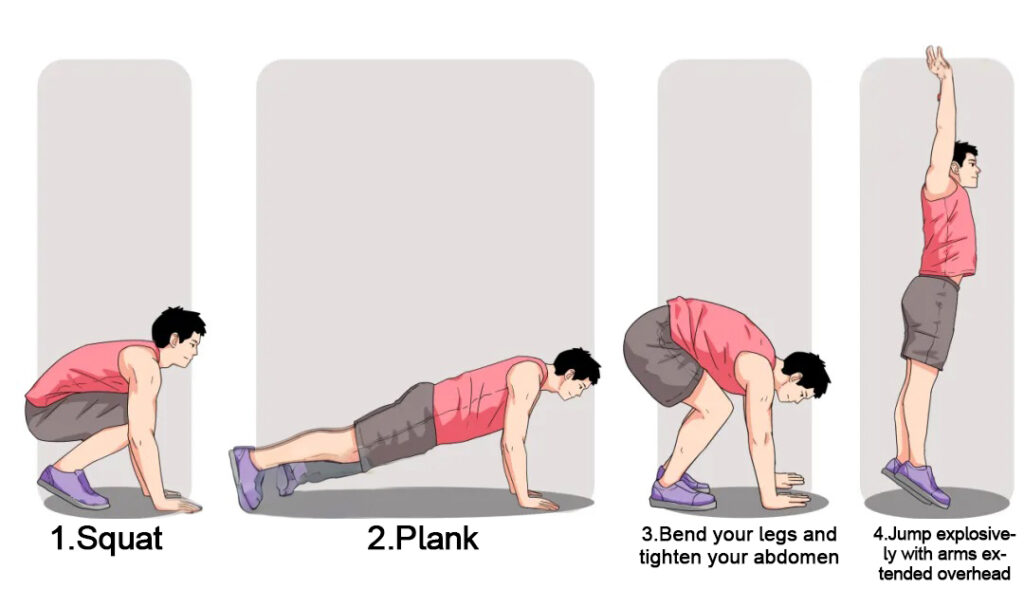We all know that exercise is beneficial for health, but how many people actually stick to a regular fitness routine? Many individuals believe that only long and intense workouts can bring results, which can be discouraging for those who are short on time or motivation. For many, exercising regularly feels like an impossible task.
But what if I told you there’s an exercise that only takes 60 seconds a day, and it could significantly improve your health? Sounds too good to be true, right? Well, it’s not!

A groundbreaking new study has revealed that a certain type of exercise, when done for just 60 seconds, can have remarkable benefits—especially when it comes to heart health and longevity. In fact, you don’t need to spend hours at the gym or engage in extreme workouts.
The Study: 60 Seconds of Exercise Could Save Your Life
The research focused on individuals who were not particularly active, analyzing the effects of moderate-to-vigorous intensity intermittent physical activity (MV-ILPA) on the risk of all-cause mortality and cardiovascular disease (such as heart attacks, strokes, heart failure, and other fatal cardiovascular conditions).

Over the course of an 8-year follow-up, participants who engaged in MV-ILPA had an average workout duration of 26.8 minutes per day. Surprisingly, a significant portion of the participants spent less than one minute per exercise session:
- 59.7% spent less than 1 minute per session
- 27.5% exercised for 1-3 minutes
- 5.7% exercised for 3-5 minutes
- 4.4% exercised for 5-10 minutes
So, what did the researchers find?
- People who exercised for 1-3 minutes per session had a 34% lower risk of death compared to those who exercised for less than 1 minute.
- Those who exercised for 3-5 minutes had a 44% lower risk of death.
- And those who exercised for 5-10 minutes had a 52% lower risk of death!

When it came to cardiovascular diseases:
- People who exercised for 1-3 minutes had a 29% lower risk of heart disease.
- Those who exercised for 3-5 minutes had a 38% lower risk.
- Those who exercised for 5-10 minutes had a 41% lower risk of cardiovascular disease.

What’s the takeaway from this research? Even if you don’t love exercise, just committing to 60 seconds of moderate-to-vigorous intermittent physical activity every day can dramatically lower your risk of heart disease and other fatal conditions. It’s a game-changer!
Of course, if you can extend your exercise to 5-10 minutes, the benefits will be even greater. But the key is consistency—just 60 seconds a day can bring about life-changing benefits!

What Counts as Moderate-to-Vigorous Intermittent Physical Activity?
By now, you might be wondering: “What exactly counts as moderate-to-vigorous intermittent physical activity?” Don’t worry, this doesn’t mean you have to be a fitness expert or spend hours at the gym. In fact, these types of exercises are likely things you already do in your daily life without realizing it!

Moderate-to-vigorous intermittent physical activity is defined as any high-intensity, short-duration exercise lasting less than 10 minutes. It involves periods of intense activity followed by brief rests, and it’s scattered throughout the day. Here are some examples:
- Power walking on your way to work
- Climbing stairs instead of using the elevator
- Running while walking your dog
- Doing vigorous housework (such as vacuuming or cleaning windows quickly)

As long as the intensity is high enough, the duration doesn’t need to be long. It’s about getting your heart rate up for a brief period and then taking a break. Even a minute or two of hard work—getting a little out of breath—can make a big difference!
Looking for Something More Intense? Try Tabata Training!
If you’re feeling inspired and want to take your exercise routine to the next level, consider trying Tabata training, a popular form of high-intensity interval training (HIIT). Tabata training involves doing a series of explosive exercises for 20 seconds at full intensity, followed by 10 seconds of rest, repeated for 8 rounds. In just 4 minutes, you’ll get a full-body workout that is both efficient and effective!
Here are some Tabata-friendly exercises:
- High knees

- Jumping jacks

- Burpees

The focus is on intensity rather than duration. You don’t have to work out for long—just push yourself to your maximum for a short burst, and then rest briefly. It’s all about short, intense effort.
Who Should Avoid High-Intensity Exercise?
As with any fitness routine, not everyone is suited for high-intensity workouts. Older adults, people with chronic conditions (such as hypertension or heart disease), or anyone recovering from recent illness (like a cold) should approach this type of exercise with caution.
If you have any of these conditions:
- Chronic health issues, such as high blood pressure or heart disease
- Joint or bone issues
- Recently recovered from illness (e.g., flu or cold)

It’s important to consult with a doctor before starting a high-intensity exercise regimen. A healthcare provider can help you choose safer, gentler alternatives, such as tai chi or gentle yoga, to ease back into physical activity.
The Bottom Line: Small Moves, Big Benefits
One important takeaway from this study is that any type of physical activity is beneficial for your health. The more effort you put in, the more benefits you’ll get, but don’t overlook the value of “fragmented” exercise throughout the day. Even a brisk walk to the store or choosing the stairs over the elevator can contribute to better health.

By intentionally increasing your activity level throughout the day—whether it’s walking faster, taking the stairs, or jumping a few times during a break—you’re giving your body the movement it needs without having to set aside a huge chunk of time.
Start with small, easy movements that you can easily fit into your daily routine. These little actions add up, and over time, they’ll have a huge impact on your health—a little effort can go a long way!



















